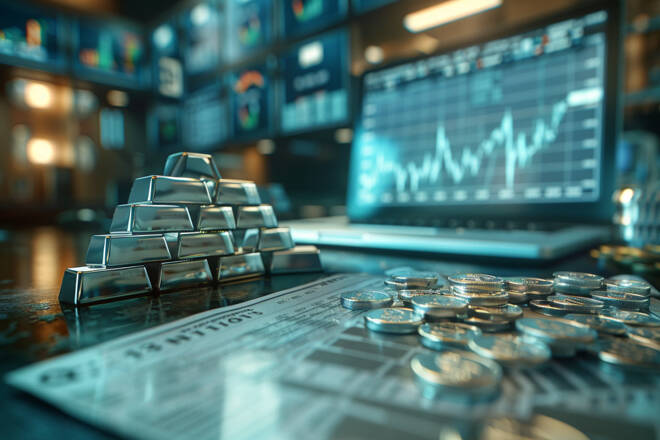Advertisement
Advertisement
Silver (XAG) Daily Forecast: Upward Trendline to Drive Buying Above $27
By:
Key Points:
- Silver remains resilient: Despite mild bullish bias, sustained around $27.62 amid risk-off sentiment and weaker USD.
- US economic indicators favor silver: Slower GDP growth, rising inflation bolster silver's hedge appeal.
- Geopolitical tensions limit silver's upside: Middle East tensions mitigate safe-haven demand, capping silver's potential gains.
The daily technical outlook for Silver reveals a price of $27.55, marking a slight increase of 0.52%. Key price levels include a pivot point of $27.64, with immediate resistance noted at $28.79 and subsequent resistances at $29.57 and $30.33. Immediate support levels are observed at $26.52, followed by $25.68 and $24.72.
Technical indicators indicate a positive trend, with the 50-day Exponential Moving Average standing at $27.63 and the 200-day Exponential Moving Average at $26.54. The current upward trendline supports the potential for a bullish trend continuation. It’s crucial to monitor the $27.64 level, as a break below could signal a significant downward movement in prices.
About the Author
Arslan Aliauthor
Arslan is a finance MBA and also holds an MPhil degree in behavioral finance. An expert in financial analysis and investor psychology, Arslan uses his academic background to bring valuable insights about market sentiment and whether instruments are likely to be overbought or oversold.
Advertisement
